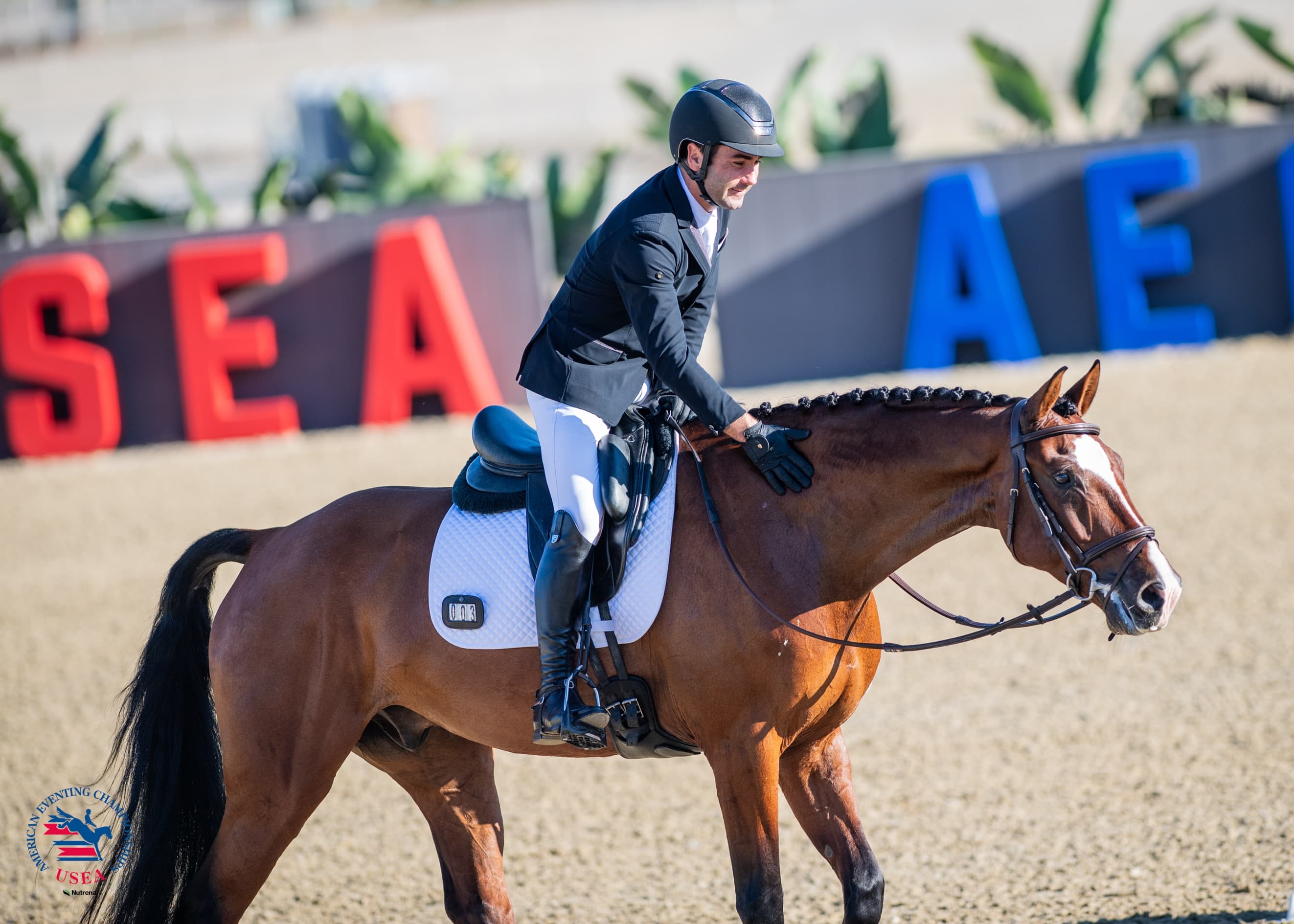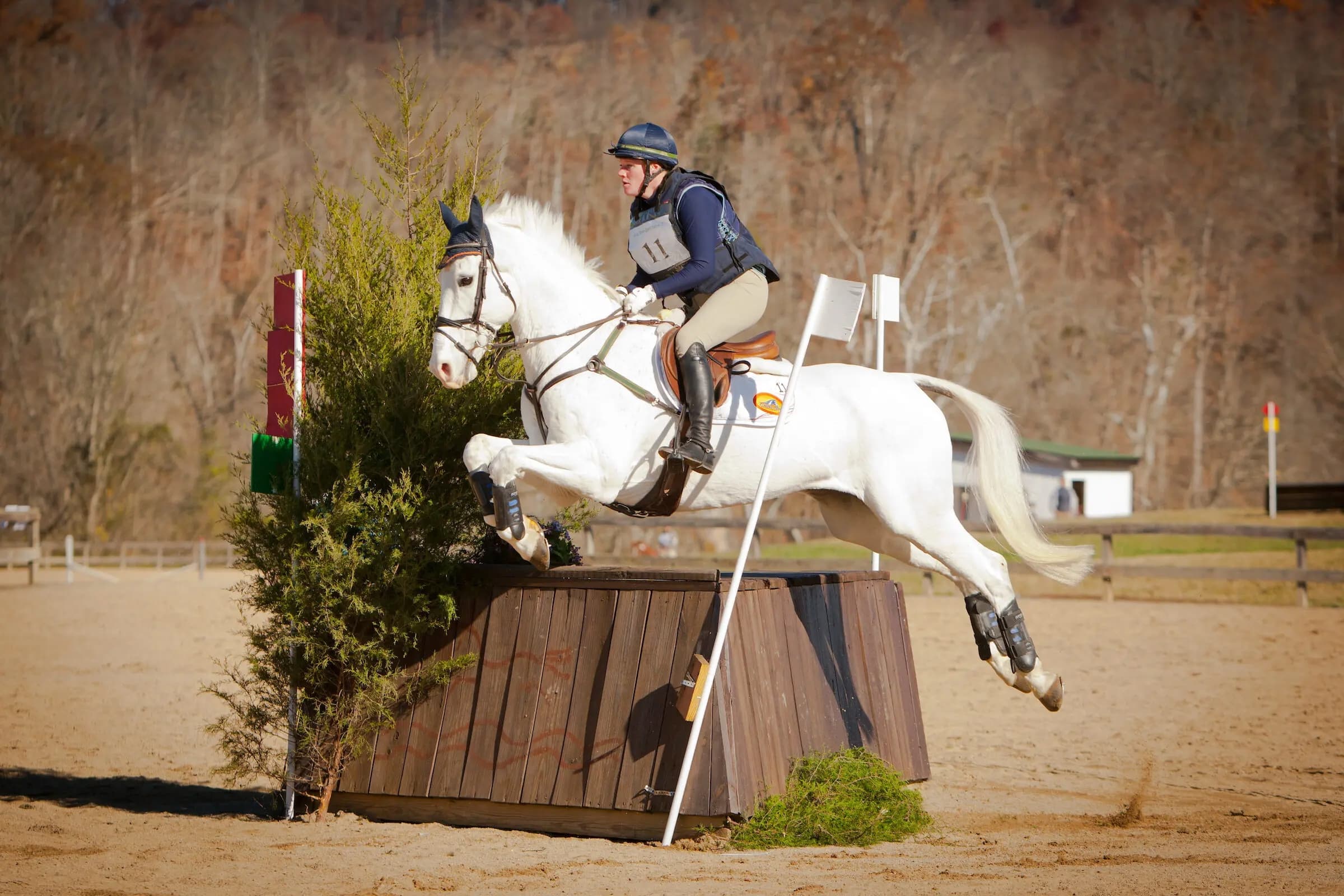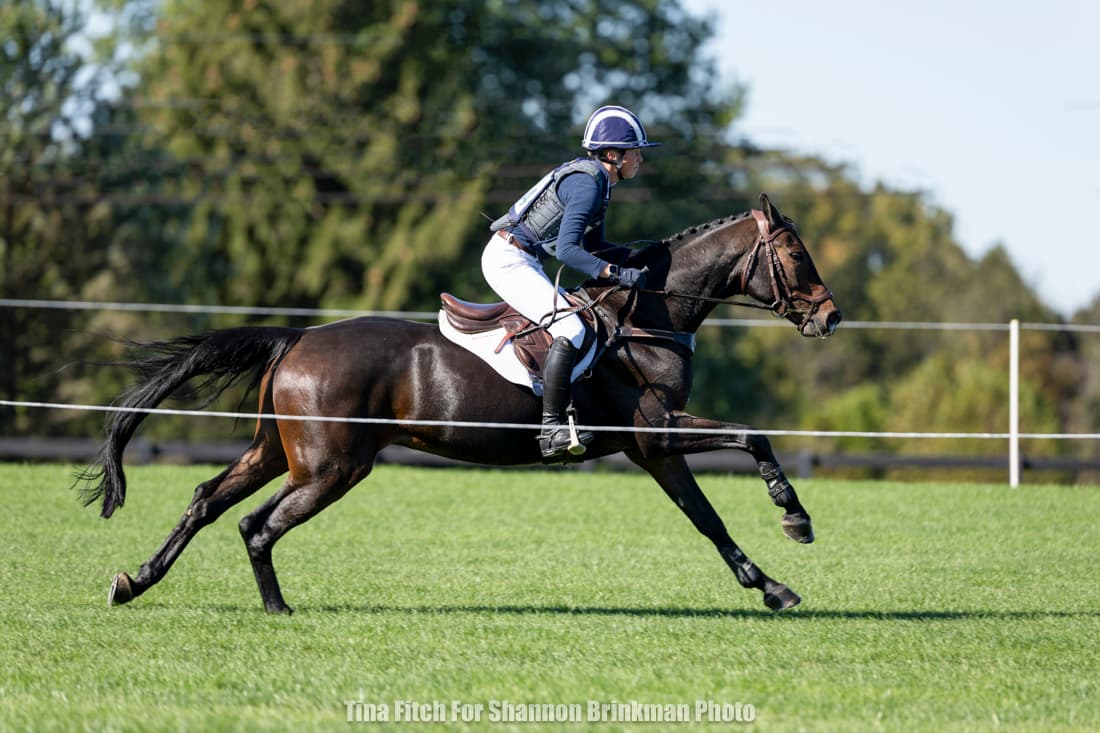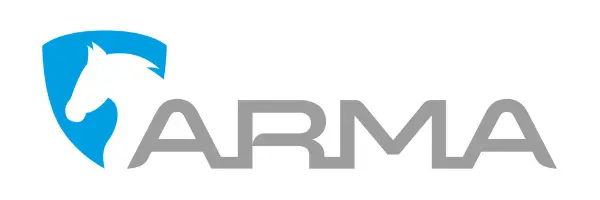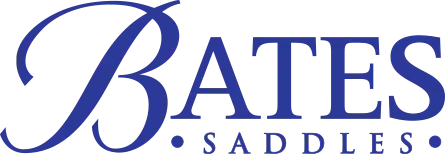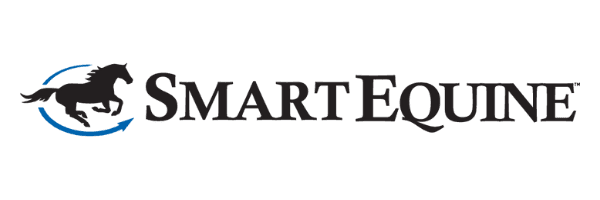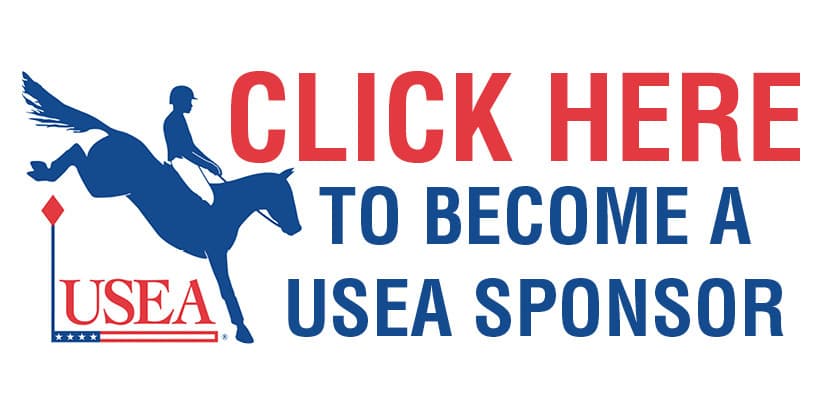Friday Afternoon USEA Convention Seminar Re-Caps

Training Solutions From Top Event Riders Re-Cap
This afternoon an international panel of top event riders took questions from a packed room of USEA Convention attendees. Here are a synopsis of the questions and answers asked in today’s hour and half meeting.
Q. Do you have any advice on separation anxiety during event?
Phillip Dutton: A horse is a herd animal. To a degree all horses want to be with a buddy. While at home separate them from the herd so they can get some confidence about being alone.
Buck Davidson: Keep the horse’s friends at home when travelling to your horse’s year-end destination event.
Allison Springer: Go back to the foundation, teach your horse to bond with you and not other horses.
Karen O’Connor: Fill the void with something that will consume them and distracts them from their separation.
Q: Would you keep a potential four-star horse that has a loose front end?
Becky Holder: I look to see if they have the scope, ability, and instincts to get them out of trouble. A horse can be taught to use their front ends to some degree.
Oliver Townend: I’ve ridden a few leg danglers. When I was starting out I would ride anything so I had to learn techniques to improve them. It definitely changes your riding style. Most importantly you have to be comfortable with the horse to be successful with it.
Amy Tryon: I normally buy all of my horses off the race track and 90% of those don’t jump well the first few times. I am more concerned with footwork and what they do behind. You can always teach them to jump better with the front end.
Karen: I would rather have a horse that jumps up above the fence than is tight in the front end and drops low to jump. Neither Gem Twist nor Custom Made had great front ends and they were still fabulous horses.
Phillip: Matters more to me how he leaves the ground. If a horse is sharp off the ground and not hesitating they should be fine.
How do you deal with nerves at a competition after having a not so great one the time before?
Becky: For me it is all about having an iron-clad plan. Be focused on your ride and job. Always keep things in perspective.
Oliver: Just get up and keep going. There are so many events in Great Britain that often you are on your way to your next event before you realized that you had just had a bad one. The more practice the less nerves.
Allison: It is okay to drop down a level or have an easy run to boost your confidence before you next event.
What age does a horse need to be for each level and how long do you keep them at the level before moving up?
Amy: Absolutely varies based on the horse. Coal Creek and Leyland are exactly the same age, I bought them at the exact same time, and they have both only been ridden by me. Coal Creek spent three years at just Novice and Training. Leyland only needed a year and a half before moving up to Preliminary. However they both reached the four-star level at the same time. It is also based on how confident building of a ride you can give the horse.
Oliver: So individual. It is not our decision; the horse tells us what to do.
Buck: The horse’s brain has so much to do with it not just physical ability. The mental trainability is very important to the process.
Karen: The fastest way to get the next level is to go slow. If you go too fast you will just end up back where you started.
What schedule do you recommend for your amateur students?
Becky: So important to get practice jumping as much as possible. My students do one serious jump school once a week alternating between cross-country and show jumping and then one other day with poles and simple exercises. I also recommend that they flat one day in their jump tack to practice the communication with shorter stirrups.
What are some suggestions for riding with more leg and less hand?
Allison: You can ride with a crop under your thumbs.
Amy: William Fox-Pitt uses a neck strap and I have adapted that for many of my students.
Karen: Learn to have a relationship with his mouth.
Becky: Use a brand new ace bandage as your reins to understand the elastic movement of contact.
Phillip: It is often an issue of not having a confident position so work on being strong in the saddle.
Do you teach your students to look for a distance or just focus on the quality of the canter?
Oliver: Right canter. Right line. Keep the stride level. If you pull, the right distance won’t be there and if you go from naught to sixty the right distance won’t be their either. Remember the horses can jump better without us.
Buck: Ride the horse not the fence. Ride the appropriate pace for the fence and the distance will be there. Only make one decision.
Allison: Produce the correct canter for the correct fence. Present every fence in the simplest manner.
Amy: Very few people in the world can actually see a distance. I teach more about the quality of the canter. It is very important to also know what a 12 foot stride feels like. Need to learn the concept of riding the correct distances.
Karen: What is the correct canter? Teach your horse many canters to have options when going to the jump or combination.
Becky: Important to address the discipline of how to use your eye. Awareness or instinct for what is about to happen. Develop instinct of how to use your eye and do the math.
Phillip: Great question, not just one answer. I educate my horses so that the jump holds them. I teach them how to go to the deep one so they know not to take off until you tell them. Work as a partner to make it easier for them to do it for you. Repetition is also important, ride them the same every time.
What do you think is the right amount of competitions in a season?
Phillip: For green horses at the lower levels I think doing back to back competitions is a great learning tool. Then you give them a break. At the upper levels you need more rest between competitions.
Becky: Age, soundness, location in the country are all factors. It is individual to the horse.
Amy: There are fewer events out West. I find a goal for each horse and then work backwards from there. I use the competitions leading up to the goal as schooling opportunities.
Oliver: I made mistakes in the past and have learned from them. It depends on the age of the horse, money, what you are producing it for, etc.
Allison: Be in conversation with you trainer and your vet to make the decision. Just because your neighbor did 10 events this season doesn’t mean that is right for you. Ask those who know you and your horse the best.
Do you have any exercises for horses that jump past the landing spot?
Karen: It is all about footwork. The horse needs to use his head and neck in a better bascule. One exercise I stole from Leslie Law is six verticals in a row 18 feet apart. The repetition teaches them.
How do you walk the distances in a line?
Karen: I walk the inside distance
Oliver: I walk 4 steps for each stride and keep track on my fingers. The feeling of how you are going is also important to the strides in the line.
Buck: It is important to understand how you land from the first jump. You aren’t married to a distance, you are married to a line.
Do you have any exercises for learning to be comfortable with jumping cross-country at speed?
Phillip: It’s practice. Sixty percent of jumps on a cross-country course are galloping fences and most of us don’t do enough practice at home. The right canter is important, and just keep coming to the jump. Your horse needs to be in front of your leg in a self carriage. I like a 14 foot stride and then I back off the last two strides. I teach a horse to respect a jump by doing trot fences and having them put in that last trot fences. You can’t teach a horse to wait by holding on to his face. Just wait with your body and keep your leg on. Get your horse used to how you want them to go.
Becky: Get all your homework done early and let your horse learn how to do it on their own.
What do you think is the one thing that has made you a great rider?
Allison: Determination, my love for training and education.
Buck: I have got a long ways to go before I am a great rider.
Oliver: Always wanting to be better
Amy: My deep love for horses
Karen: All of the above as well as the people around me and the horses they have given me to ride.
Becky: Someone told me I wasn’t going to be any good at it. The amazing group of horses I have had to ride.
Phillip: True Blue Girdwood because he was the horse that caused me to move to America. I would probably be a farmer in Australia if it wasn’t for him.
What do you say to a very young kid who wants to event?
Allison: I started when I was six. My family didn’t know anything; we just bought the neighbor’s pony. Pony Club taught me everything and probably saved my first pony’s life.
Buck: Pony Club. You don’t want your kid growing up like I did. Just need someone you respect to teach him to love and ride horses. Don’t need to specialize early on.
Oliver: Make them beg for a year so they get hungry.
Amy: I like kids on ponies riding bareback, swimming with just a halter on. Not too structured, just let them learn balance and to have fun.
Karen: I was the kid that begged for my first horse. Diversity is important. Learn to love horses and horsemanship. Have a good foundation before specializing.
Phillip: Put the kid in a fun situation with friends and don’t make it too structured.
One last piece of advice from the panel
Oliver: Keep it simple. Keep riding and enjoy it.
Buck: Have fun.
Allison: Keep it simple for your horses. Enjoy the sport.
Amy: Enjoy the process.
Karen: If you didn’t bring it to the event don’t expect to have it.
Becky: Enjoy your horse and keep at it.
Phillip: It’s all in the dream. Appreciate your horse. Remember how fortunate we are to be doing what we are doing.
From Young Rider to Olympic Rider: Building Team USA’s Pipeline To Success
The focus of this meeting was to explain the current pipeline in which young riders travel through to the Olympic level, and how the pathway can be changed or improved. USEF’s Director of Eventing, Sara Ike started the seminar with some examples of other sport’s youth programs including fencing, swimming, and sailing. She then moved on to other equine organizations such as British Eventing, US Hunter Jumper Association, and the US Dressage Federation.
Sara focused especially on the USHJA’s Emerging Athletes Program for riders under 21. In the program there are three levels. The first level encompasses 10 clinics across the country and allows approximately 160 participants. Then the best half of those move on to level two which includes five clinics. The best 12 from those are invited to national training.
When explaining the current USEF Eventing pipeline, Sara showed a picture of a tree root. Some of the roots were: Developing rider list, NAJYRC, I bought a nice horse, I train with a big name trainer, I came from left field, etc. Sara is hoping that we can streamline our program to fit more in a pyramid shape that encompasses all talented riders.
The next few slides ecplained some programs that are currently in place including: the high performance and developing riders list, talent spotters, young riders, and the young riders advancement program. Some of the financial support that young riders have are the Amanda Warrington, Beacon Charm, and Jackie Mars grants. However, in 2010 the Eventing High Performance Program had a $1.2 million dollar budget and only $80,000 was spent on the developing riders most of which was used to send the team to Boekelo CCI3*.
The floor was then opened for questions and suggestions. Some of the suggestions that arose were:
- Develop an Equine Athletes Talent Spotting Program and then match talented horses and riders
- Learn about funds from breed organizations and local communities for young riders
- Get a clinic program going across the country similar to the jumper program
- Piggyback our program on the USHJA and USDF ones to reduce costs
- Expand the talent spotters to all ICP IV instructors to spread it more across the country
- Put together a clinic were breeders could bring their young horses to match them with local young riders
- Working student programs to get riders in good training programs
- Hire a USEF staff person who is devoted solely to young rider development
If you have any more questions or suggestions about the young rider pipeline be sure to contact Sara Ike at the USEF.

